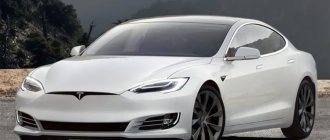The legislation of the Russian Federation establishes that any foreign products imported into the country must undergo customs clearance. Electric vehicles are no exception, classified by Russian Federation Decree No. 832 dated July 12, 2017, as vehicles driven exclusively by an electric motor and charged from an external source of electricity.
The relevance of the issue of customs clearance for Tesla, Renault Zoe, Audi e-Tron (Sportback), Citroën C-Zero, Peugeot iOn Active, Mitsubishi i-MiEV, Fiat 500 e VOLL ELEKTRO, Volkswagen e-up, Nissan e-NV200, Mercedes-Benz B Electric Drive, BMW i3, iX xDrive50, iX xDrive40, Porsche Taycan, Chery Tiggo 3XE, Zeekr (Geely) and other electric vehicles in Russia are determined by periodically changing legal regulations, as well as Government measures aimed at reducing environmentally harmful carcinogenic emissions in atmosphere. The development plan for electric vehicle transport for the period from 2021 to 2021, approved in Minsk at a meeting of the Eurasian Intergovernmental Council on November 27, 2021, provides a number of benefits for its owners, for example:
- no transport tax;
- the opportunity to travel free of charge on toll highways and park in specially designated areas equipped with charging terminals;
- permission to drive on lanes dedicated to public transport.
As for the customs clearance process for electric vehicles in the Russian Federation, its rules have changed since 2019, which affected not only the amount of duty payable to the treasury, but also the list of documents required for provision.
Documentation provided when crossing the border
The registration of the electric vehicle is carried out by the customs authorities geographically linked to the place of permanent residence of the importing citizen. During this time, the vehicle is placed in a warehouse, where it can remain for no more than 2 months. This period is sufficient to resolve all organizational issues, since the procedure usually takes about 2-3 weeks.
The first check of documents for compliance with the legislative norms of the Russian Federation is carried out when crossing the border, therefore, before entering the country, the car owner should take care of the availability of:
- passports (foreign and Russian citizen);
- a statement that must indicate the exact time of arrival of the cargo at a specific checkpoint;
- declarations in form TD-6. If transportation is carried out in a container, then a mark is made about unaccompanied baggage, and if the electric vehicle moves under its own power, then about accompanied baggage;
- a customs receipt confirming the fact of depositing the security deposit into the department’s account, and certified by the inspector. If the funds are contributed not by the owner, but by his representative, then a notarized power of attorney will be required;
- a set of documentation for the vehicle (registration certificate, warranty certificate, purchase agreement, insurance policy).
After a thorough inspection of the electric vehicle and examination of the provided documents, the customs officer will make an entry in the journal and issue an entry permit. Further actions boil down to contacting the appropriate customs authority at the place of stay to complete registration, as well as calculating and paying state-established fees.
Customs payments
From May 4, 2021 to December 31, 2021, by decision of the Council of the EEC (Eurasian Economic Commission), customs duties on the import of electric vehicles for individuals and legal entities were zeroed out in the EAEU countries (Russia, Belarus, Kazakhstan, Kyrgyzstan, Armenia). We are talking about the category “certain types of motor vehicles with electric engines” (item 8703 80 000 2 CN FEA of the EAEU).
The amount payable for the import of an electric vehicle into Russia and its customs clearance consists of several types of mandatory contributions:
- A processing fee, the size of which is a fixed amount and directly depends on the cost of the imported vehicle.
- Customs duty (CANCELED UNTIL 12/31/2021) The car owner must also pay:
- VAT, which in 2021 is 20%;
- excise tax based on the power of the installed electric motor.
- A single tax provided only for individuals wishing to clear customs an electric car, the date of which no more than 3 years have passed since its release. If the price of the car is less than 8,500 euros, then the rate is set at 54%, if more, then 48%. Upon payment, the owner is exempt from customs duties.
- Recycling fee provided for all categories of vehicles. The amount varies depending on the purpose of the electric car (commercial or not), as well as the legal status of the purchaser (individual or legal entity).
To avoid any difficulties with customs clearance of an electric vehicle in Russia, you need to take seriously all the nuances present at each stage of this procedure.
Drive on tax incentives
The main drivers of the expansion of the electric car market in the world have been and remain government support measures for the industry. They include not only tax breaks for using an electric car, subsidies for its purchase, but also other financial and non-financial incentives related to the operation of the car. For example, in the 21st century, in almost all EU countries, the political influence of green parties has increased, which are actively promoting programs for the transition to electric cars. For a European car owner, the share of taxes - VAT, registration and road taxes - over five years can reach from 18 to 160% of the base price of the car. Moreover, this process continues. But there is also the opposite effect. These support measures are offset by an increase in the tax burden on traditional vehicle ownership. For example, in France, the introduction of environmental taxes, which were supposed to help humanity fight global warming, hit the poorest segments of the population and increased social stratification. The riots involving the so-called yellow vests were largely provoked by state policy in the field of taxation of oil refining, as well as the operation of gasoline and diesel vehicles.
Now a rollback has begun in the other direction. In many countries, support measures for electric transport have begun to be reduced. This applies even to the absolute leader in the number of electric cars - China. The example of Denmark is very instructive: when tax incentives for the purchase of electric cars were canceled here in 2021, their sales fell by 80% compared to the previous year.
Prepared by Sergei Tikhonov
Infographics "RG"/Leonid Kuleshov/Irina Alpatova
Meanwhile
Main stages of registration in Russia
The operation of a certified vehicle (checked using the Rosstandart database) powered by an electric motor on the territory of the Russian Federation will be legal only if the state requirements relating to its registration are consistently met. The algorithm of actions should be as follows:
- Payment of a deposit, which is a guarantee that the car owner will subsequently pay the fees required by law and comply with the rules of customs clearance. It is deposited several days before the expected border crossing into the department’s bank account. If, upon checking the documentation, it turns out that the funds have not been credited to the balance, the electric car will be detained until the problem is resolved and placed in a paid parking lot. Confirmation of the conscientious implementation of this paragraph of the rules is a customs receipt presented at the checkpoint along with other documents upon entry into Russia.
- Passing the check at the border post. If the documentation meets the requirements, a note is made in the registration log about the possibility of crossing the border, the cargo is assigned the appropriate number, and its owner is given a pass to the customs zone.
- Registration, which consists of a detailed study of the package of documents and inspection of the vehicle. At this stage, it is necessary to provide all the information about the electric vehicle, on the basis of which it will be assigned a code according to the nomenclature of the Commodity Nomenclature of Foreign Economic Activity of the Customs Union, and the required contributions will be calculated.
- Making payments required for customs clearance. During the fulfillment of obligations, the car is placed in a box, and the accompanying person is given a notification about the completion of this action. It is important not to delay resolving the issue, since the storage period of the machine should not exceed 2 months. If during the registration process customs officers identify any violations, for example, deliberately false information in the documentation, the car owner will be subject to administrative or criminal prosecution.
- Returning an electric vehicle from a temporary storage warehouse. To do this, you must provide an officially issued Russian-style technical passport, confirmation of payment of duties and fees, as well as a receipt order.
According to the law of the Russian Federation, it is allowed to operate an electric vehicle that has not been cleared through customs, but certain rules must be observed.
Tesla electric car (thanks to attentive readers!) Jaguar charging
How much will customs clearance of an electric car cost?
The following factors directly influence the costs that the car owner will have to bear during customs clearance:
- price in the sales contract;
- year of issue;
- engine parameters (power, volume, fuel);
- category of the owner (perhaps he is entitled to benefits).
Customs clearance costs consist of different payments, which are calculated using different formulas and are influenced by different factors. Therefore, for ease of calculation, motorists are recommended to use a customs calculator. This program makes it possible to quickly calculate how much additional expenses it will cost to buy a car. Finding a customs calculator is very simple, you just need to enter the appropriate query in the search bar. You can use any of them to calculate payments, for example here or here. The information they will show is preliminary, since the real calculations will be made by customs officers. But you can rely on the calculator numbers to understand how much it will cost to buy an electric car in general and whether you have enough money.
To calculate how much it costs to clear an electric car through customs, enter the following data into the fields of the calculator:
- cost and currency of purchase;
- engine volume in cm3;
- power in kW or hp;
- car age;
- motor type;
- who imports (individual or legal entity).
Rules for traveling in a non-customs cleared vehicle
The following can legally drive a car that has not passed customs clearance:
- A foreign citizen who has received the right to temporary stay in Russia. A permit is issued at the customs post, issued for no more than 1 year.
- A citizen of the Russian Federation who has acquired ownership of an electric vehicle registered in another country, has issued temporary import and paid taxes and duties. The period of stay is limited to 6 months in 1 year, after which he must leave the country with the mandatory closure of the permit.
If the driver of an uncleared car does not have permits, he is prosecuted in accordance with administrative or criminal law.
Responsibility for violating the rules
For providing incorrect information, the car owner is subject to a fine of 2,500 rubles, which in some cases is accompanied by confiscation of the cargo. When a citizen is detained for illegally crossing the border, he is sentenced to pay an amount 3 times the cost of the electric car.
The sanction for evasion of customs duties in the amount of 1 to 3 million rubles provides for a fine of 50,000 rubles or imprisonment for a period of 2 years.
Responsibility for the import of an uncleared electric vehicle into the territory of the Russian Federation is not provided if:
- the owner has a residence permit in another country;
- Cars are transported from member countries of the EAEU Customs Union (Kazakhstan, Russia, Belarus, Armenia, Kyrgyzstan);
- the car is registered in another state or a temporary import permit has been issued.
The period of possession of an unregistered electric vehicle is limited by legal regulations. Once customs clearance has been completed in full, the final stage is the registration of the vehicle with the State Traffic Safety Inspectorate.
Registering an electric vehicle with the traffic police
After customs clearance, you should contact the traffic police department with a receipt issued at customs and accompanying documents for the car (receipt order, receipt of payment of state duty, registration certificate). If the documentation meets the established requirements, the owner will be issued numbers and an STS card.
Only a serious attitude to customs requirements will allow the smooth operation of environmentally friendly transport, while taking advantage of the benefits provided by the state.
Map of electric gas stations in the Russian Federation and the world
Benefits for electric vehicle owners
The loyalty program for owners of environmentally friendly transport in the Russian Federation is still frankly weak. A transport tax, its reduction or complete abolition could be an excellent incentive for the purchase of electric cars.
The amount of the contribution is determined at the regional level. In March 2020, a number of entities have already canceled tax payments for owners of Tesla and other electric vehicles. But at the federal level, the prospect of exempting owners from annual payments is still being discussed.
There is no tax in the following constituent entities of the Russian Federation:
- Moscow and Moscow region,
- Saint Petersburg,
- Kabardino-Balkarian Republic,
- Kaluga region,
- Lipetsk region,
- Amur region,
- Kursk region,
- Kaliningrad region,
- Tyumen region,
- Irkutsk region.
True, the abolition of tax contributions in a number of regions applies only to those cases when the car’s power does not exceed 150–200 hp.
In addition, in some regions free parking lots equipped with chargers have been organized, movement has been established in dedicated lanes, and free driving on toll roads is allowed.









